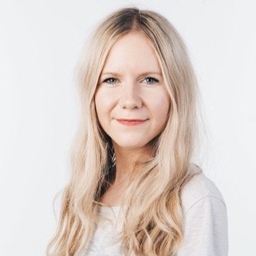Mindset Shifts to Support Self-Awareness and Growth

If there’s one thing we can depend on in life, it’s that challenges are going to come our way.
From the small and mundane frustrations like traffic jams and bad weather, to bigger devastations like grief, breakups, and financial issues, bad events can rack up. And it can be easy to develop a defeatist attitude when it feels like nothing is going right.
But according to a popular subfield of psychology, making a simple switch to your mindset could make all the difference to your overall levels of happiness and fulfilment, regardless of the uncontrollable obstacles in your path.
Dubbed positive thinking, it’s a practical and direct tool we can harness with regular daily practice. More than just a social media therapy trend, studies have found that it has solid science-backed benefits for both your physical health and mental well-being.
What is positive thinking all about then?
Is your glass half empty or half full? This age-old saying might be a bit of a cliché, but it sums up the methodology of positive thinking in a nutshell.
“I like to think of positive thinking as a tool for approaching life’s challenges in a positive way,” says NLP coach Rebecca Lockwood. As a cognitive behavioural therapist, she’s coached hundreds of clients through the tools and techniques for changing the way we think and behave.
Positive thinking is about looking at things from a positive point of view, but it doesn’t mean ignoring life’s hardships. Psychologists warn that glossing over traumatic events can lead to toxic positivity, a form of self-gaslighting that means we fail to process and heal the associated strong emotions.
“Instead, it’s about thinking of the positives within the negative,” Lockwood clarifies. “So when something unexpected happens to us, we can shift our mindset from focusing on the obvious negatives to think of ways we can benefit from it.” This could be a new career avenue we’re free to explore from a job redundancy, a valuable lesson we’ve learned from a failure, or even the post-traumatic growth that comes from a devastating loss.
“I talk about something called the ‘anxiety spiral’, which happens when we get trapped in well-trodden patterns of negative thinking,” says Lockwood. “Nudging our focus to the positives makes it easier to move through challenges, rather than getting stuck in them for days, months, or years.”
Ever since Vincent Norman Peale wrote his bestselling book The Power of Positive Thinking in 1952, people have been using optimism as a mindset tool for success in all areas of life. In recent years, this tenet of positive psychology has enjoyed a second wind, thanks to the popularisation of manifesting; the act of intentionally focusing your energy towards a particular goal, in order to ‘attract’ it to your life.
What are the benefits, according to science?
From better stress management and lower rates of depression, to bolstered immunity and greater levels of life satisfaction, positive thinking has been scientifically linked to a number of health benefits.
A study published in the ‘Journal of Ageing Research’ found that having a positive mental attitude could even help you to live longer, with researchers associating an optimistic outlook with a decreased mortality rate over a 35-year period.
Not only does feeling happy make you more likely to engage in healthy lifestyle choices, like exercising and eating well, but scientists believe its hidden power lies in its ability to help us regulate stress, which is directly associated with six of the leading causes of death globally.
“Clients of mine anecdotally talk about having a heightened feeling of wellness when they start problem-solving life’s challenges with a positive outlook,” Lockwood explains. “They report higher levels of self-worth and more confidence in their abilities. When bad things do happen, they’re better able to process the setback and move forward resourcefully.”

4 ways to bring more positive thinking into your life
Ok, so we know that optimism is good for us, but smiling through stressful life events is easier said than done. The good news is that if you’re prone to ruminating on a problem, positive thinking is a skill we can practise and learn, even if it doesn’t come naturally. Here’s how to do it:
Notice how you talk to yourself
Do you wake up in the morning and visualise yourself anxiously stuttering through a work meeting? Or maybe you feel defeated by your to-do list before you’ve even started?
“Notice the general tone and attitude of your inner voice,” says Lockwood. “If you approach the day telling yourself that it’s going to be a bad one, it can become a self-fulfilling prophecy.
“Instead of judging the negative thoughts, just allow them to settle and then take a curious look at what they’re saying, asking yourself whether it’s true and if it’s helpful,” says Lockwood. Nine times out of ten, we waste our energy needlessly worrying about events or outcomes that never even happen.
Ask a better question
Once you’ve mindfully stopped a negative thought in its tracks, Lockwood advises re-framing it in the voice of the most positive person you know.
“Write down the thought on paper and then challenge yourself to re-nose it in a positive way,” she says. For example, if you get bad feedback at work, your knee-jerk thought could be to ask yourself, ‘Why am I so bad at my job?’. This can quickly spiral into fears about redundancies, money worries, and career progression, fuelling the aforementioned anxiety spiral.
“Instead, we could approach it in a new way, asking, ‘what lesson can I learn from this feedback?’,” Lockwood posits. By problem-solving the challenge from a fresh mindset, we can use failure as fuel for self-growth and improvement.

Try journalling
A lot of people don’t realise they’re stuck in negative thinking patterns because the behaviour has been going on for many years. “Journaling is a great tool for getting all your thoughts out in the open and then thinking about where you can take them next,” says Lockwood.
The key to great journaling, she believes, is never reading your words back. If you know there’s an audience, it can make you hyper-critical, self-conscious, and cause you to edit your thoughts. “Just get it down on paper and approach it like a one-time-use exercise, so you can reap benefits immediately.”
Visualise how you want to feel
Visualisation is a simple technique that you can use to create a strong mental image of what you want to achieve. Most of us would like to be happy, calm, and satisfied people, but thanks to the hectic nature of modern life, we can spend our days tipped over into frustration, anger, and stress.
Instead of visualising material things like cars, houses, or clothes, Lockwood suggests focusing your mind on how you want to feel instead. “Take a moment for five calming deep breaths, and then allow yourself to visualise the feelings you’d like to experience on a daily basis.”
Consciously stepping into our ideal goal state can then help us to cultivate more of these feelings every day.
A final takeaway on positivity
Helpfully, we don’t need to be a stress-free multi-millionaire to get more of the good stuff, as many studies have theorised that feelings of fulfilment come from within. In fact, in 2010, economist Daniel Kahneman coined the idea that there’s a monetary ‘happiness plateau’; once your annual household income hits £62,000 ($75,000), earning more money doesn’t make you any happier.
So, could we feel passion by having the self-belief that we can nail a creative project? Or is peacefulness easily within our grasp, through noticing simple joys like hot coffee, sunshine, and music?
If nothing else, we can all feel a universal gratitude that we have the incredible opportunity to be here, experiencing life, even when it gets hard.


















